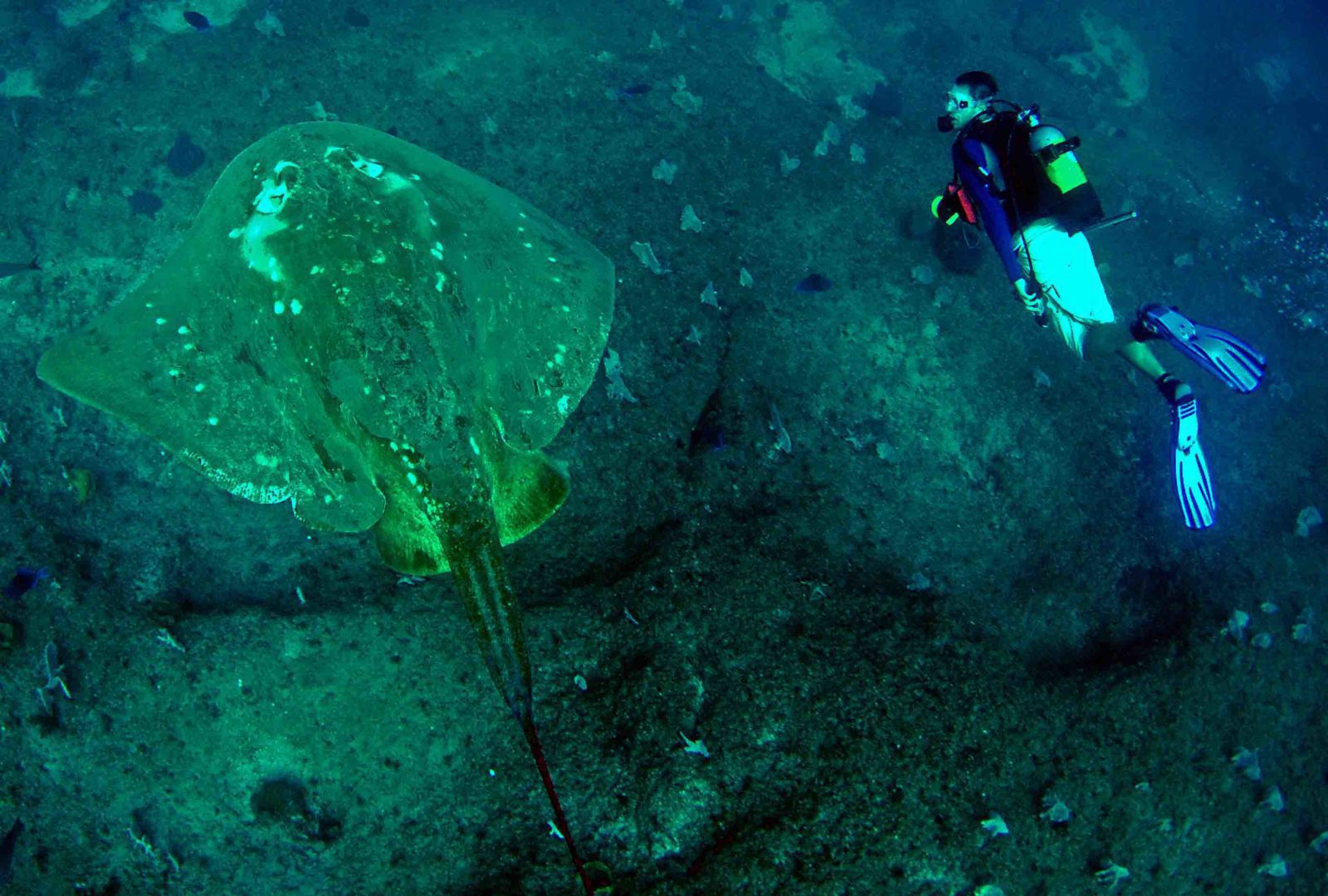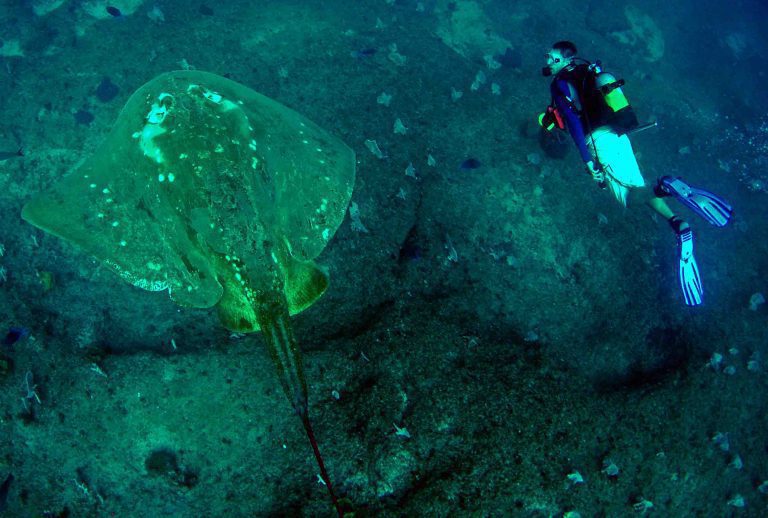DIVING NEWS
Divers unlock secrets of biggest sting ray

Picture: Andrea Marshall, Marine Megafauna Foundation.
Elusive smalleye sting rays are the biggest marine sting rays on record, growing as wide as 2.2m. But little had been known about them before photo ID was used for the first time recently to study them in Mozambique waters.
“We reported the first sightings of smalleye sting rays in 2004 and have since been racing against the clock to learn more about their ecology before it’s too late,” said Dr Andrea Marshall, co-founder and principal scientist of the Marine Megafauna Foundation (MMF).
Although 31% of the world’s sharks and rays are IUCN-listed as facing extinction, the status of smalleye sting rays (Megatrygon microps) has been undetermined because of lack of data. They are however thought to be under pressure from fishing.
“These mysterious giants are thought to be patchily distributed across the Indian Ocean and western Pacific, but southern Mozambique is probably the best location to encounter them on inshore reefs,” said Marshall.
23 June 2019
Keen to know whether the rays’ white dorsal spots could be used to distinguish and track individuals over long periods, the marine biologists went through local dive-centres to collect images taken by visiting divers.
“Fortunately for us, southern Mozambique and its rich marine life attract many passionate scuba divers,” said volunteer Atlantine Boggio-Pasqua, adding that most of the divers owned cameras and were happy to make images and footage available.
“Their contributions proved immensely valuable,” she said. “We managed to gather more than 140 photographs suitable for comparison and identification, with some images dating as far back as 2003.”
Seventy individuals were identified, including 15 seen more than once in the area. Comparing their spot patterns over time, the markings appeared to be permanent, as on manta rays.
“Smalleye stingrays may look intimidating at first glance with their large, razor-sharp tail spines but they’re actually really charismatic and easy to approach,” said Boggio-Pasqua. “We hope to receive many photo and video contributions from citizen-scientists in future. They could tell us more about the species’ habitat preference as well as feeding and cleaning behaviour.”
The rays were often spotted at cleaning stations, with banner and other small fish in attendance.
Some of the rays turned out to have travelled considerable distances along the coast, including one pregnant female that covered 125 miles in a minimum of 102 days before making the return trip, pupping during the journey. This was the longest straight-line distance ever recorded for any of the 80 species of whiptail sting rays.
Smalleyes were rarely seen resting on the seabed and, unlike other sting rays, are thought to be semi-pelagic, but Marshall said that many questions remained unanswered: “Where do they live, how fast do they mature and how do they reproduce? Filling these knowledge-gaps is crucial to figuring out how to protect them properly in Mozambique and other parts of the Indian Ocean.”

